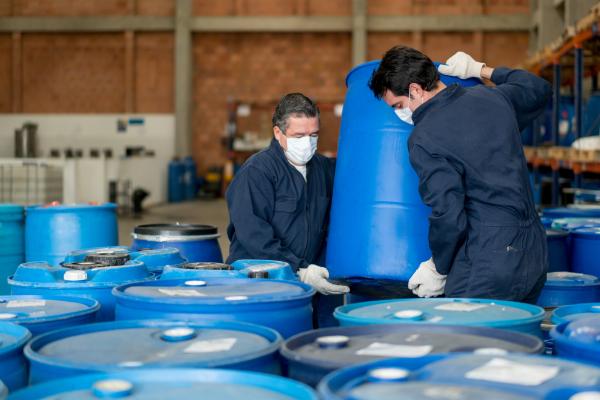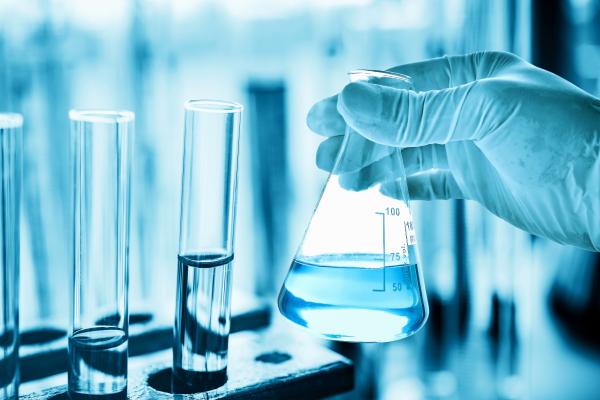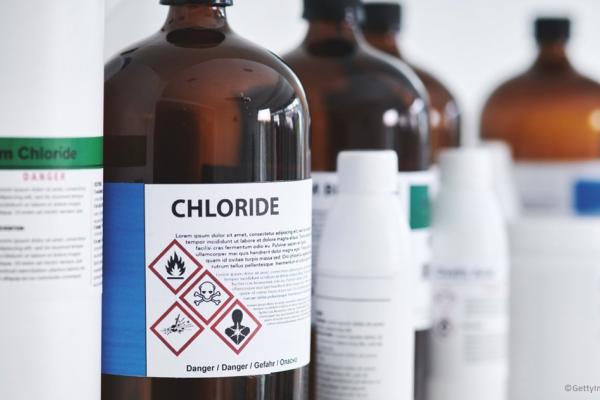Overview
The protection and welfare of animals is a priority for the EU. This includes wildlife, zoo animals, farm animals, animals in transport and animals used for scientific purposes. Regarding animals in science, EU legislation is unique as it sets a final goal of full replacement of all animals used for scientific and educational purposes and is taking concrete action towards that goal.
Studies that still need to be carried out on animals must be done in compliance with specific regulations that aim to improve the welfare of those animals. This includes studies on increasing the basic understanding of human or animal biology, developing or producing new medicines, physiological studies, environmental effects or testing chemicals or new food additives.
Objectives
The EU aims to
- harmonise legislation to promote EU competitiveness and innovation
- improve animal welfare and establish the “Three Rs principle” (replacement, reduction and refinement) in all use and care practices when animals still needed in research and testing
- improve transparency
Law
The first Directive for the protection of animals in science was adopted in 1986 and was replaced by Directive 2010/63/EU. Regulation (EU)2019/1010 introduced a new level of transparency to help progress towards eventually replacing animal use in science. The amendments have been incorporated in the consolidated text of the Directive.
The “Three Rs”
EU legislation on animals in science centers on the principle of the “Three Rs”: replacement, reduction and refinement, which first appeared in 1959.
Replacement can be defined as methods, strategies or approaches that do not involve the use of live animals. Reduction covers any approach that will result in fewer animals being used to achieve the same objective. Refinement signifies the modification of any procedures or practices from the time the experimental animal is born until its death to minimise its suffering and enhance its well-being, or by moving from species that are considered more sentient to those less sentient.
The EU undertakes several activities towards these shared goals, including
- funding for research
- hosting the EU Reference Laboratory for Alternatives to Animal Testing (EURL ECVAM)
- international harmonisation of regulatory testing requirements
- and a public-private partnership to advance alternatives in the area of regulatory use - the European Partnership for Alternative Approaches to Animal Testing (EPAA)
EU Reference Laboratory for Alternatives to Animal Testing (EURL ECVAM)
The Joint Research Centre’s EU Reference Laboratory for Alternatives to Animal Testing (EURL ECVAM), established by Directive 2010/63/EU, works on the development and promotion of non-animal approaches to testing and research. Among its tasks is to validate methods which replace, reduce or refine the use of animals for the safety and efficacy/potency testing of chemicals, biologicals and vaccines.
The Inventory of 3Rs knowledge sources is a result of an assessment of technologies, information sources and networks from all relevant sectors with potential impact on the advancement of the “Three Rs” carried out by EURL ECVAM. EURL ECVAM also works to advance non-animal models used in biomedical research. EURL ECVAM has published a series of studies to review available and emerging non-animal models being used for research in various disease areas with the aim to identify and describe specific research contexts where animal models have been put aside in favour of novel non-animal techniques.
International harmonisation
A regulatory acceptance of alternative methods is required internationally if true reduction in animal use is to be delivered. To that end, the Commission is actively promoting alternative approaches on international fora such as OECD, ICH and VICH, as well as during bilateral discussions with third countries.
Moreover, the International Cooperation on Alternative Test Methods (ICATM) includes governmental organisations from the EU, the US, Japan, Canada, South Korea, Brazil and China. It aims at promoting enhanced international cooperation and coordination on the scientific development, validation and regulatory use of alternative approaches.
European Partnership for Alternative Approaches to Animal Testing (EPAA)
The Partnership is a voluntary collaboration between the European Commission, European trade associations, and companies from seven industry sectors. The partners are committed to pooling knowledge and resources to accelerate the development, validation and acceptance of alternative approaches to further the "Three Rs" in regulatory testing.
Further information
- Archive of reference material on formal validation, regulatory acceptance and use of alternatives
- Working Document on the Availability of Information on the Three Rs
- Some Member States provide voluntary reports on their progress and practical measures taken related to the Three Rs. View these progress reports here.
- “Three R” centres across Europe
EU networks
The Network provides support for EURL ECVAM validation studies aimed at assessing the reliability and relevance of alternative methods that have a potential to replace, reduce or refine the use of animals for scientific purposes.
Various relevant EU regulatory agencies, including EFSA, ECHA and EMA , together with the Member States, constitute the Preliminary Assessment of Regulatory Relevance network, known as PARERE. EURL ECVAM systematically consults the Network on the proposed alternative approaches and strategies.
The primary role of the Committee is to carry out high-quality independent peer reviews on validation studies to assess the scientific validity of test methods and specify the capacity and limitations of the proposed methods. The outcomes of the ESAC peer reviews are published as "ESAC Opinions."
The Forum ensures a close dialogue between non-governmental stakeholders, including parties from industry, academia and civil society organisations.
Implementation
In line with Article 54(1) of Directive 2010/63/EU, as amended by Regulation (EU) 2019/1010, Member States are required to submit a report on its implementation by 10 November 2023 and every five years thereafter. The Commission must publish a Union overview based on that information within six months.
Commission Implementing Decision 2012/707/EU (as amended by Decision 2014/11/EU) in its Annex I describes the specific elements of the Directive that are to be covered by the Member State implementation reports.
EU Implementation Reports
The second EU Implementation Report, SWD(2024)183 final, has been published.
Member States submitted their national implementation reports to the Commission electronically. All Member State submissions can be found here.
The first EU Implementation Report, COM(2020)15 final is accompanied by a Commission Staff Working Document, SWD(2020)15 final.
Member States submitted their implementation reports to the Commission, see the EU Survey questionnaire and the Member State submissions to the EU Survey. Additional information complementing the submissions is also available: Annex - Part I - MS additional submissions and Annex - Part II - MS additional submissions.
Review of the Directive
As required by the Directive, a review of the Directive was undertaken in 2017. The Review Report COM(2017) 631 is accompanied by a Commission Staff Working Document SWD(2017) 353. The Staff Working Document provides further insight and contains several recommendations for different stakeholders, with the common aim of improving the attainment of the objectives of the Directive.
Article 10 Feasibility Study
The capture of non-human primates from the wild gives rise to animal welfare, health, and ethical concerns. To end the capturing of animals from the wild for both scientific and breeding purposes, the Directive has set as one of its aims to allow, after an appropriate transition period, only the use of non-human primates that are the offspring of animals which have themselves been bred in captivity, or that are sourced from self-sustaining colonies.
A feasibility study (2017) was conducted to consider progress towards this aim. Considering the current and projected demand and supply of the non-human primate species used, and impacts on the animal welfare and health, the conclusions of the feasibility study do not support altering the dates set out in the Directive.
A second feasibility study (2022) concludes that at this time, it is not possible to determine if or whether the aspiration of sourcing non-human primates only from self-sustaining colonies will be achieved in the future. With the recent changes in use, availability, demand and breeding practices in some centres, it is unlikely to be achieved for all commonly used non-human primate species in the foreseeable future.
Statistical reports
The ALURES Statistical EU Database contains data on the use of animals for scientific purposes collected by the Member States and submitted to the European Commission annually.
The Commission also provides an annual summary report of the data submitted by Member States. These data provide an improved understanding of where and how animals are still used in science today and will help identify areas in which efforts for the development and validation of alternative approaches need to be intensified.
The first EU summary report, under Directive 2010/63/EU, on the statistics on the use of animals for scientific purposes by the Member States of the Union covers data from three years, 2015-2017. From 2018 onwards, EU summary reports will be published annually.
- 2022 Statistical Report, SWD(2024) 185 final providing data from 27 Members States and Norway.
- 2021 Statistical Report, SWD(2024) 184 final providing data from 27 Members States and Norway.
- 2020 Statistical Report, SWD(2023)84 : Executive summary Parts A and B and Part C providing data of 2020 from 27 Members States and Norway.
- 2019 Statistical Report, SWD(2022)199: Executive summary Parts A and B and Part C providing data of 2019 from 28 Members States and Norway.
- 2018 Statistical Report, SWD(2021)204: Executive summary Parts A and B and Part C. It is important to note that from this summary report onwards, also data from Norway is included. Therefore, this report provides data of 2018 from 28 Member States and Norway.
- 2015-2017 Statistical Report, COM(2020)16 final, covering EU data of 2015-2017 from 28 Member States, accompanied by a Commission Staff Working Document, SWD(2020)10 final
- Seventh Statistical Report, COM(2013)859/final, covering EU data of 2011 from 27 Member States, accompanied by a Staff Working Document, SWD(2013) 497 final.
- Sixth Statistical Report, COM(2010) 511/final 2, covering EU data of 2008 from 27 Member States, accompanied by a Staff Working Document, SEC (2010) 1107/final 2.
- Fifth Statistical Report, COM/2007/675 final, covering EU data of 2005 from 25 Member States, accompanied by a Staff Working Document, SEC (2007) 1455.
- Fourth Statistical Report, COM/2005/7 final, covering EU data of 2002 from 15 Member States, accompanied by a Staff Working Document, SEC (2005) 45.
- Third Statistical Report, COM/2003/0019 final, covering EU data of 1999 from 15 Member States.
- Second Statistical Report, COM (1999) 191 final, covering EU data of 1996 from 15 Member States
- First Statistical Report, COM (94) 195 final, covering EU data of 1991 from 10 Member States
National Contact Points
The Directive requires all Member States to nominate a national authority serving as contact point for the purposes of this Directive.
See the contact details for the National Contact Points.
National Committees
The Directive requires all Member States to establish a national committee for the protection on animals in science. The National Committee advises competent authorities and animal welfare bodies, exchange information and share best practises within the EU.
See the contact details for the National Committees.
Guidance documents and posters
It is important that the Directive on the protection of animals used for scientific purposes is implemented correctly. Therefore guidance material has been developed to help all stakeholders apply the principle of the Directive correctly. These publications aim to significantly improve animal welfare and science by enhancing a common understanding of the Directive's provisions across all Member States of the EU.
Guidance documents
- Animal Welfare Bodies and National Committees
- Education and Training Framework
- Genetically Altered Animals
- Inspections and Enforcement
- Non-technical Project Summaries (NTS)
- Results of Retrospective Assessment (Updates to NTS)
- Project Evaluation and Retrospective Assessment
- Severity Assessment Framework
Posters
Posters can be downloaded, printed (up to AO size) and placed in work areas from here.
A catalogue of published guidance, provided to the Commission by National Committees has been prepared. The content of the guidance provided by Member State National Committees does not imply a policy position of the European Commission. Only the Court of Justice of the European Union is entitled to interpret EU law with legally binding authority.
See also the Questions and answers on the legal understanding of specific provisions of the Directive.
Tools
Open access to statistical information on the use of animals in science.
Open access to non-technical summaries on the use of animals in science.
Promoting and facilitating the use of non-animal methods in testing and research.
Education and training platform for laboratory animal science, including e-modules.
- EURL ECVAM status report on non-animal methods in science and regulation (2023)
- EURL ECVAM status report on non-animal methods in science and regulation (2022)
- EURL ECVAM status report on the development, validation and regulatory acceptance of alternative methods and approaches (2021)
- EURL ECVAM status report on the development, validation and regulatory acceptance of alternative methods and approaches (2020)
- EURL ECVAM status report on the development, validation and regulatory acceptance of alternative methods and approaches (2019)
- EURL ECVAM status report on the development, validation and regulatory acceptance of alternative methods and approaches (2018)
- EURL ECVAM status report on the development, validation and regulatory acceptance of alternative methods and approaches (2017)
- EURL ECVAM status report on the development, validation and regulatory acceptance of alternative methods and approaches (2016)
- EURL ECVAM status report on the development, validation and regulatory acceptance of alternative methods and approaches (2015)
- EURL ECVAM, status report on the development, validation and regulatory acceptance of alternative methods and approaches (2013-April 2014)
- Communication from the Commission on the animal testing and marketing ban and on the state of play in relation to alternative methods in the field of cosmetics (2013)
- EURL ECVAM progress report on the development, validation and regulatory acceptance of alternative methods (2010-2013)
Related links
Main laws: Directive 2010/63/EU, Commission Implementing Decision (EU) 2020/569, Recommendation 2007/526/EC
Related topics: Cosmetics Regulation, REACH Regulation, Pesticides, Biocides, Pharmaceuticals
Related EU agencies: European Chemicals Agency, European Medicines Agency, European Food Safety Authority
Contact
For questions about EU environmental policy, please contact Europe Direct.
See also the contact details for Member State authorities and the Member State contact points for the PARERE Network.






